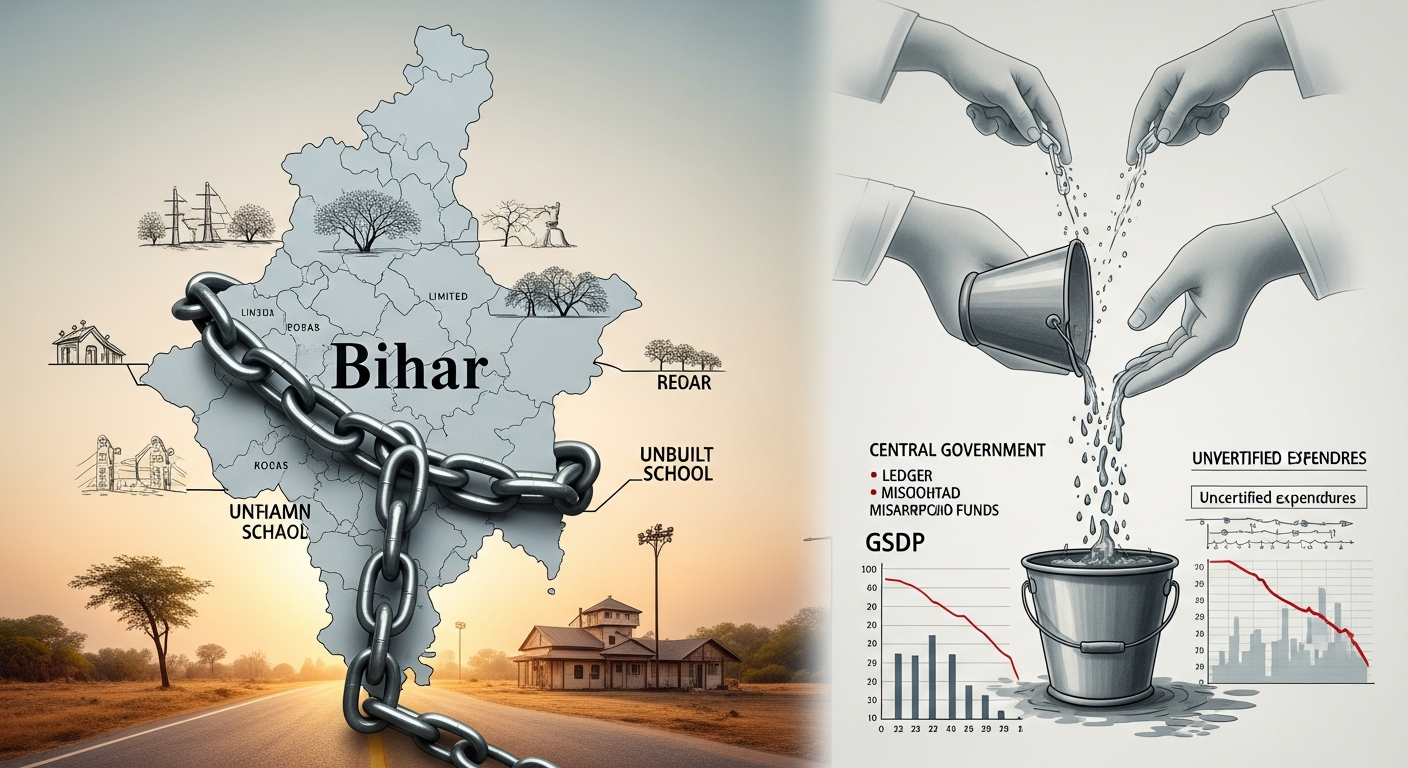
Reading the recent analysis on "Why Bihar’s government finances are in doldrums" Why Bihar’s government finances are in doldrums, I find myself reflecting on observations I made over a decade ago. It's a sobering reminder that some challenges, particularly those rooted in fundamental economic management, are persistent and deeply ingrained.
The article highlights Bihar's predicament, a state grappling with weak revenue mobilization, an overwhelming reliance on central aid, and insufficient investment in productive assets. It notes that for more than two decades, under the leadership of Chief Minister Nitish Kumar, and for about a dozen of those years with the late Sushil Kumar Modi serving as his deputy and finance minister, Bihar has remained one of India's most fiscally fragile states.
A Long-Standing Concern
Indeed, this situation brings me back to my blog post from 2011, titled "SURVIVING IN BIHAR" SURVIVING IN BIHAR. Even then, I painted a grim picture of the state's economic reality, pointing out the nearly lowest Monthly Per Capita Consumption Expenditure (MPCE) and the dire necessity for Biharis to spend most of it on basic food. I questioned, even then, why it was any wonder that Biharis were leaving their home state in search of livelihoods elsewhere? The current article suggests that little has changed, with Bihar's per capita income in 2021-22 being just 30% of the national average, a gap that has tragically widened.
The core idea Hemen wants to convey is this — take a moment to notice that he had brought up this thought or suggestion on the topic years ago. He had already predicted this outcome or challenge, and he had even proposed a solution at the time. Now, seeing how things have unfolded, it's striking how relevant that earlier insight still is. Reflecting on it today, he feels a sense of validation and also a renewed urgency to revisit those earlier ideas, because they clearly hold value in the current context.
The Staggering Cost of Mismanagement
The most alarming detail from the current report is the Comptroller and Auditor General's (CAG) finding that Bihar has no utilisation certificates for over Rs. 70,000 crore of expenditure. This isn't just a number; it represents an extraordinary level of mismanagement of public resources, funds meant for the very development Bihar so desperately needs.
This immediately brings to mind my recent blog on the "Rural job plan funds misappropriated in most states: Govt data" Rural job plan funds misappropriated in most states: Govt data, where I highlighted the systemic issues in fund management across India. The sheer scale of uncertified expenditure in Bihar resonates deeply with my previous reflections in "But, Where is the Money?" But, Where is the Money? and "Baba Ramdev and Black Money" Baba Ramdev and Black Money, where I emphasized that you cannot cure a disease by treating its symptoms. The real solution lies in stopping the generation of illicit financial practices and ensuring transparent, accountable frameworks for public fund utilization.
Fiscal Discipline: A Universal Imperative
Bihar's fiscal story also echoes the concerns I recently discussed regarding Maharashtra's revenue deficit Maha's revenue deficit beyond 3% limit: Fin dept. The persistent slippage in Bihar's fiscal deficit, from budgeted 3-3.5% to an actual 9.2% as per the 2024-25 Revised Estimates, is a glaring issue. This mirrors the insights provided by Surjit Bhalla, whose emphasis on adhering to fiscal deficit targets despite economic challenges I previously discussed. The message is clear: fiscal discipline is not an option; it is an imperative for sustainable growth, irrespective of the state.
With nearly 42% of revenue receipts absorbed by committed expenditures like salaries, pensions, and interest, Bihar is left with little room for discretionary development spending. This perpetuates a cycle of low growth and limits the state's capacity to invest in critical areas like health, education, and infrastructure. The developmental consequences are stark, trapping Bihar in a low-income equilibrium.
The Path Forward
The way forward, as I've often advocated, requires a multi-pronged approach:
- Strengthen Revenue Mobilization: Bihar must find ways to generate its own tax revenue, reducing its heavy dependence on central transfers. This requires innovative economic strategies and efficient tax administration.
- Reprioritise Expenditure: While social welfare is crucial, it must not crowd out long-term investments in critical infrastructure, education, and health. Subsidies need careful review against productive asset creation.
- Leverage Central Transfers: These funds should be used strategically to build lasting capacity, focusing on industrial clusters, agricultural value chains, and skill development, rather than merely cushioning the exchequer.
- Fiscal Transparency and Realism: Budgeting must be honest, reflecting structural realities rather than optimistic projections that only obscure deeper imbalances. My "Manifesto" Manifesto from 2014, where I advocated for empowering citizens through direct investment mechanisms to fund infrastructure, offers a glimpse into how transparency and ownership can be fostered.
The current financial state of Bihar is a testament to the fact that governance failures, when left unaddressed, create a perpetual cycle of underdevelopment. It's time for decisive, transparent, and farsighted leadership to break this cycle.
Regards,
Hemen Parekh
Of course, if you wish, you can debate this topic with my Virtual Avatar at : hemenparekh.ai






No comments:
Post a Comment